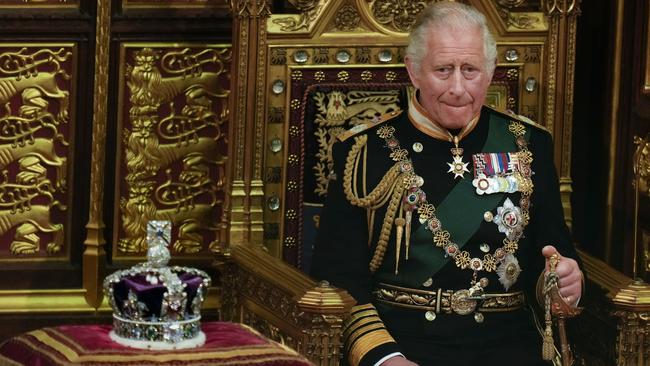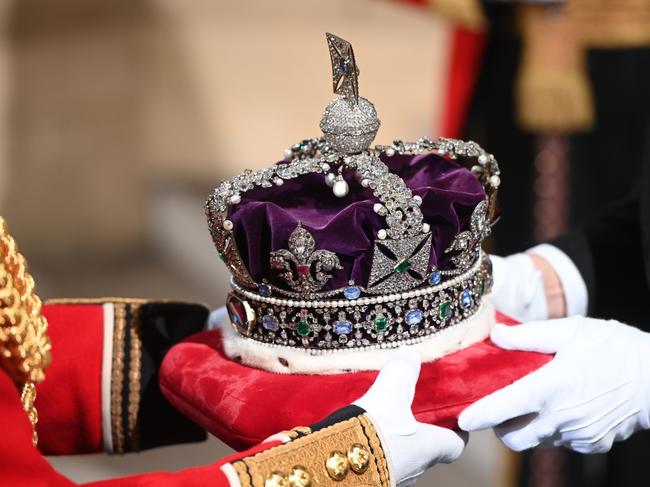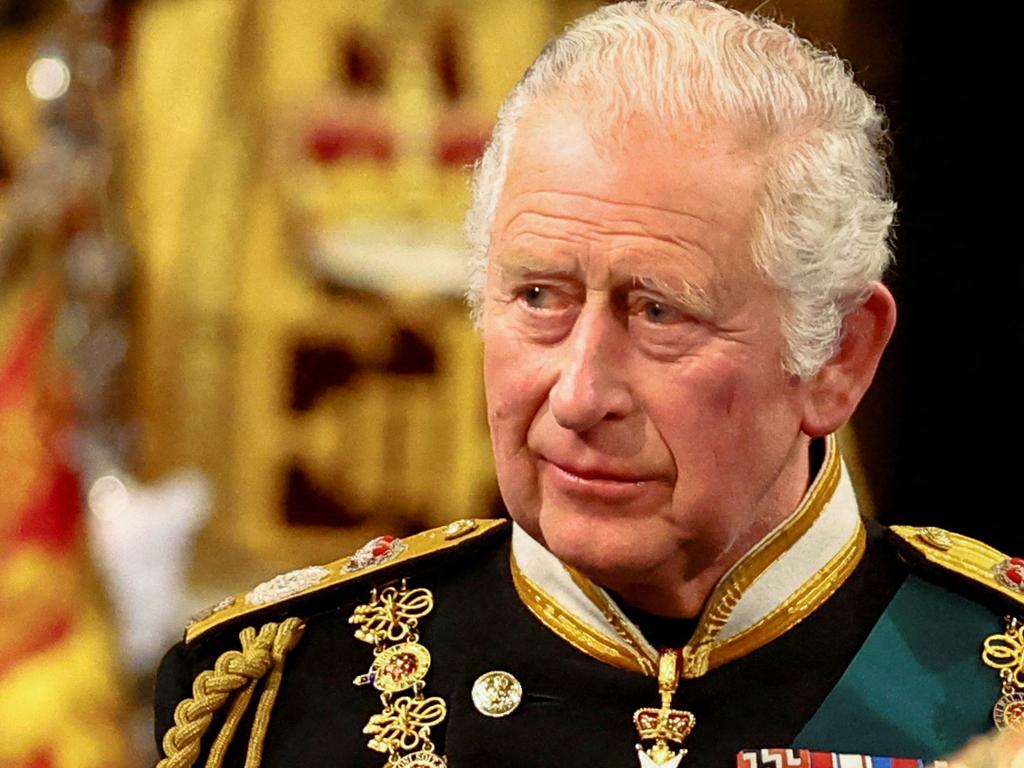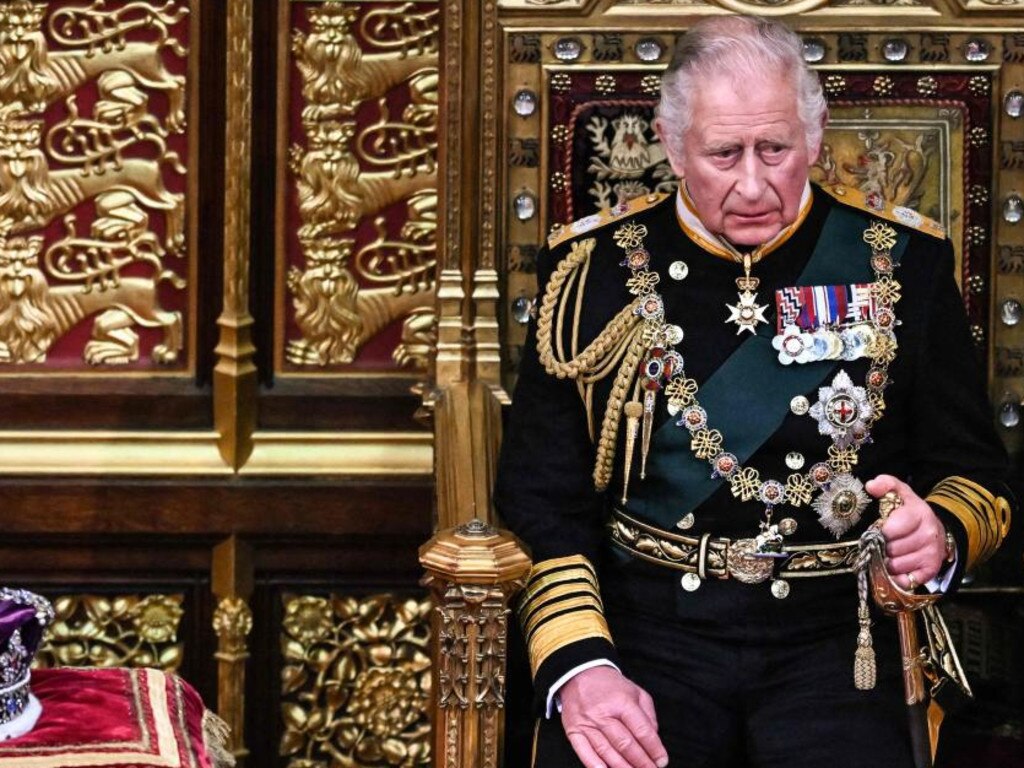The Queen’s absence from Westminster was all part of her plan
It was part of a grand transition project for Charles to stand in for his mother in the British parliament last week – masterminded by the Queen herself.

For years the T-word has been spoken in hushed tones behind palace walls, the Queen’s family and courtiers wary of discussing openly the transition from this Elizabethan age to the reign of Charles III.
But the monarch’s “reluctant” absence from the state opening of parliament last week for the first time in 59 years means the word can no longer be avoided. The Prince of Wales and the Duke of Cambridge jointly deputised at the ceremony as the Queen’s counsellors of state because of the “episodic mobility problems” that have forced her to pull out of several engagements since last October, when she spent a night in hospital.
As Charles, the longest-serving heir-apparent in British history, read his mother’s speech dressed in his “full rig” uniform of Admiral of the Fleet, gazing pensively at the imperial state crown on a cushion beside him, the message could not have been clearer.
“Make no mistake, this was the trailer,” says a well-placed royal source. The events at Westminster last week were planned by the Queen, Charles and their aides to “soften the edges of transition” before the full-length Charles feature now in production. “The prince was dressed in a very regal way, but not to the point of appropriating the sovereign,” says the source. “Once you adjust your eyes to that, it won’t be so different when we see him wearing the crown. Technically, it wasn’t even necessary to have him read the speech.”
On the previous occasions the Queen missed the state opening, when she was pregnant in 1959 and 1963, the lord chancellor read her speeches.
“Having her heir read it was a very conscious decision by her. It plays to that point about cementing in people’s minds that his role is coming, be in no doubt. Blink, and you couldn’t tell the difference between Tuesday and when he first reads the speech as king.”

A source close to the monarch confirms she was adamant that Charles, not Dominic Raab, the Lord Chancellor, should give the speech: “The Queen would have been proud that her family took on that duty on her behalf.”
It was the most high-profile constitutional role Charles has assumed publicly for his mother, but the transition has been going on for a while. The Queen is, after all, 96.
Charles, 73, and William, 39, regularly undertake investitures at Buckingham Palace and Windsor Castle. Charles has laid the national Remembrance Sunday wreath at London’s war memorial, the Cenotaph, on the Queen’s behalf since 2017. He represented his mother at the recent Commonwealth Day service at Westminster Abbey and the royal Maundy service at St George’s Chapel, Windsor, and hosted the first of the season’s garden parties on Wednesday at Buckingham Palace.
A source close to the Queen is pragmatic about her capabilities in her roles as head of state – the official duties – and head of the nation, her more symbolic role.
“Things have been changing for a while. The Queen can still fulfil the (head of state) role though she might not fulfil it as much in public, but people are getting used to that. She is still signing all the legislation, still receiving visiting heads of state and ambassadors, because she can do all that from her office. But we’ve seen more and more handing over of the head of nation elements – the investitures, the charities and patronages.”

Those close to the Queen emphasise that the head of state is “pin sharp” and in charge. Announcing her absence from the state opening, courtiers stressed it was the monarch, not her deputies, who would meet her privy counsellors on Wednesday and the sovereign, not her heir, who conducts weekly audiences with the prime minister.
The Queen has been a consummate professional at sending messages with images throughout her 70-year reign, and her Accession Day photographs and video footage released by Buckingham Palace on February 6 showed her at work with her private secretary, Sir Edward Young, in charge of her red box of correspondence.
But what the Queen sees in her red boxes, Charles also sees. The future king receives almost all of the government paperwork that goes to the head of state.
A source close to Charles, says: “He is as close to concurrent with the information as it is possible to be. He gets to see pretty much everything and is as alongside the Queen on matters of state as is appropriate. Mother and son see each other privately far more than people realise, and I am sure they are discussing matters of state as much as family matters.”
Another senior royal source says: “Of course he has to be up to speed on all those key matters.”
Charles, William and other working royals undertake overseas tours on behalf of the Queen, who no longer travels abroad, and next month Charles and Camilla head to Rwanda for the Commonwealth Heads of Government Meeting, the first gathering since 2018 in London, where the Queen, who heads the Commonwealth, pulled off a fait accompli to install her son as her successor, announcing to the delegates: “It is my sincere wish that the Commonwealth will continue to offer stability and continuity to future generations and will decide one day the Prince of Wales should carry on the important work started by my father in 1949.” A unanimous vote appointing him as the next head followed.
That deft manoeuvre, and the significance of her Accession Day message in February telling the world of her “sincere wish that, when that time comes, Camilla will be known as queen consort”, are clear signs the Queen is shaping the transition and preparing us, with her actions and words, for what comes next.

This was evident in her Christmas Day broadcast: “We see our own children and their families embrace the roles, traditions and values that mean so much to us, as these are passed from one generation to the next …”. And in her video message to the UN Climate Change Conference in Glasgow last year, where she poignantly conceded “We none of us will live forever”, adding: “It is a source of great pride to me that the leading role my husband played in encouraging people to protect our planet, lives on through the work of our eldest son, Charles, and his eldest son, William. I could not be more proud of them.”
A source close to the Queen, says: “That is her saying: ‘I know what it takes to do this job, I can see my family can do it, they have what it takes and it’s in good hands.’ ” Another source says: “In the last couple of years she has embraced the succession, whereas before I think she was quite resistant to it, like an aged grandparent who would not give up driving.”
Royal insiders say the Queen is in the driving seat with regard to the transition’s direction of travel, but Charles is “not a passive agent”. A source close to the prince, says: “He’s driving his team very hard to make sure everything is in good shape and a state of readiness, but that is very different to being precipitous or wanting it to happen.”
There is speculation a Buckingham Palace balcony appearance at Trooping the Colour on June 2 may be her last public appearance, now that she is conducting most engagements from Windsor Castle, which she has made her permanent home. But those close to the Queen say despite her physical limitations, she is not yet ready to bow out.
A YouGov poll last week found a third of Britons think she should retire. They are likely to be disappointed. The Queen said in February, on the 70th anniversary of her accession: “As we mark this anniversary, it gives me pleasure to renew to you the pledge I gave in 1947 that my life will always be devoted to your service … I look forward to continuing to serve you with all my heart …” For the sovereign, this will always be a job for life.
The Sunday Times





To join the conversation, please log in. Don't have an account? Register
Join the conversation, you are commenting as Logout